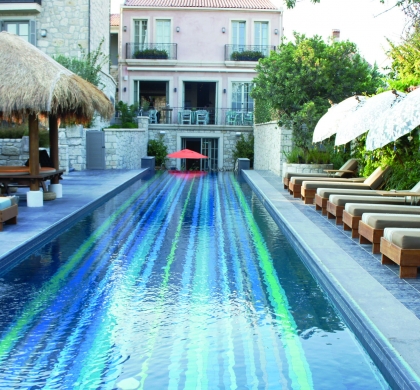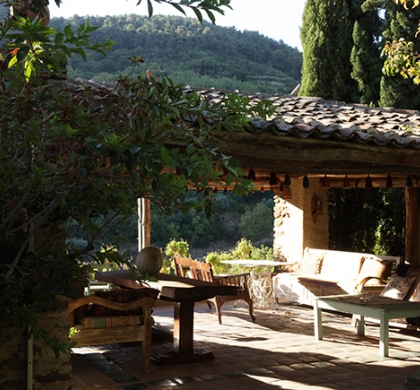Buy or gift a stand-alone digital subscription and get unlimited access to dozens of back issues for just £18.99 / $18.99 a year.
Please register at www.exacteditions.com/digital/cornucopia with your subscriber account number or contact subscriptions@cornucopia.net
Buy a digital subscription Go to the Digital EditionTwenty years ago, one of the Mediterranean’s richest wetlands, Izmir’s Gediz Delta, was doomed. But now that developers have been thwarted, flamingos and pelicans are flocking back. Gernant Magnin is thrilled by images of a paradise regained
Izmir’s Gediz Delta is Bird Paradise, a drowned landscape of flooded meadows and saline lagoons, salt- and freshwater marshes, saltpans and reed beds, where the Gediz River deposits silt as it flows into the Aegean. One of Turkey’s largest coastal wetlands, it is a temporary or permanent home to almost 300 bird species and on its way to becoming a Unesco World Heritage site.
The delta’s most iconic feature is a vast colony of greater flamingos. Some 15,000 pairs – one tenth of all the world’s population of these extraordinary birds – breed in the saltpans, with females laying a single egg in a skilfully made nest of sun-baked mud resembling a miniature volcano. Fledglings are raised in a “crèche”, watched over by non-breeding flamingos, though their parents have no difficulty in recognising and feeding their own offspring. Young flamingos are white or grey, eventually taking on their “flaming” reddish-pink hue as they gorge on carotenoid-rich brine shrimp in the saltpans.
Despite their gangly appearance, flamingos are powerful fliers, winging their way at high altitude at around 35mph, covering up to 375 miles in a night. Chicks ringed at the Gediz Delta between 2003 and 2008 have been sighted in breeding colonies in a dozen countries outside Turkey, as far west as Spain.
Another sensational delta dweller is the Dalmatian pelican, one of the largest flying birds on the planet, with a wingspan of often more than three metres. Classed as vulnerable, it breeds on the natural islands in the lagoons, on nests up to a metre tall, clumsily made but practical piles of reeds, sticks and grass, which the birds’ own droppings solidify over time.
Waders breed along the shores and in the marsh, among them the collared pratincole, a giant swallow-like bird that catches insects in graceful flight. The nocturnal and sneaky stone curlew, which prefers arid and semi-desert habitats, leaves the Gediz in September, probably – though no one yet knows – to spend the winter in the Sahara. Rare loggerhead sea turtles and Mediterranean monk seals are seen away from the lagoons but rely on the delta’s natural ecosystem.
A great work of nature, the delta has also, as so often, been shaped, exploited and threatened by human habitation over millennia. Izmir, formerly Smyrna, putative birthplace of Homer, has been historically significant for 5,000 years. Since Neolithic times people have made use of the fertile soils of the delta and the nearby mineral riches. In the 3rd millennium BC it was settled by Greeks and Lydians. It grew into a massive fortified city, which then dwindled and was refounded by Alexander the Great. There followed the Persians, the Romans, the Byzantines, the Seljuks, the Crusaders, and eventually again the Turks, from around AD1400. For successive civilisations, the natural assets and especially the natural harbour presented a perfect location for a mighty trading city worthy of a mighty empire.
By the 19th century the city and its overspill had led to more and more land erosion, and silt carried by the river. In around 1880, to prevent silt from blocking passage for shipping, the Ottomans diverted the Gediz so that it reached the sea tens of miles to the north. Together with 20th-century diversions of the groundwater to feed the demand of farmers and the city, this means that what we call the Gediz Delta today is the remaining western section of the original huge, mainly freshwater, delta. It is now a predominantly saline wetland, centred on four salty estuaries, with saltpans, originally constructed by Italian entrepreneurs in 1863, between the lagoons.
Although the Gediz Delta is accepted as one of the country’s most valuable wildlife habitats, its conservation has been a fight all the way. Until recently there was little sympathy in Turkey for large natural wetlands; and over the past 30 years Izmir planners have had more exciting ideas, such as the construction of tanneries, sewage treatment plants, housing complexes, and a dump for millions of tons of mud dredged from the bay of Izmir.Although internationally recognised and accorded protected wetland status by the Ramsar Convention in 1998, the delta continued to deteriorate as the city gobbled it up and responsible authorities kept silent.
In 2004 WWF Turkey launched a court case against lifting the formal protection status to allow the building of hundreds of homes. And in 2017 a proposal for a mega-bridge to link the northern and southern shores of Izmir Bay was approved by the Ministry of Environment and Urbanisation, in defiance of its many protections (Key Biodiversity Area, Important Bird Area, Ramsar site and all).
However, Doğa Derneği (BirdLife Turkey), supported by citizens, universities and authorities, campaigned relentlessly, and successfully contested in the courts a project that would have spelt the end for the delta as an irreplaceable resource. In January 2019 the proposal was permanently dropped. Now we wait to see this watery heaven receive the Unesco recognition it deserves.
THE PHOTOGRAPHERS
The photographs in this article have been generously supplied by four dedicated Izmir ornithologists:
Dr Ömer Döndüren is a biologist and newspaper columnist.
Dr Zafer Kurnuç, a physician by profession, who has captured more than 100,000 images of the delta’s birds.
Okyay Bulut works at the Izmir municipality’s Natural Life Park and is an amateur bird and wildlife photographer.
Prof Dr Sezai Göksu became a birdwatcher after retiring from his post as lecturer in town planning at Izmir’s Dokuz Eylül University
Istanbul, newly distilled in cool monochrome: the photographs of Annette Louise Solakoğlu
Once the staple food of nomads and warriors, pastırma has turned into a gourmet delicacy. Text and photographs by Berrin Torolsan
In the cave cellars of Cappadocia, Udo Hirsch and Hacer Özkaya are reinventing ancient ways with wine.
Briony Llewellyn and Charles Newton on a rediscovered portrait by JF Lewis
Nick Thorpe pays tribute to a friend and the much-loved author of Cornucopia’s ‘Letter from Anatolia’
A must for stylish travellers, the Ottoman document case carried state secrets as well as intimate messages. A show of these covetable objects at the Sadberk Hanım Museum captivates Philip Mansel
Off the beaten track in Anatolia with Don McCullin



Cornucopia works in partnership with the digital publishing platform Exact Editions to offer individual and institutional subscribers unlimited access to a searchable archive of fascinating back issues and every newly published issue. The digital edition of Cornucopia is available cross-platform on web, iOS and Android and offers a comprehensive search function, allowing the title’s cultural content to be delved into at the touch of a button.
Digital Subscription: £18.99 / $18.99 (1 year)
Subscribe now